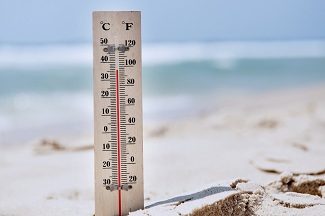Mapping extreme weather across the U.S.
 Today we’re updating our online map providing an overview of extreme weather events in the United States since 1990. The map highlights memorable examples of extreme heat, heavy precipitation, drought, and wildfire, four types of events with clear trends connected to climate change.
Today we’re updating our online map providing an overview of extreme weather events in the United States since 1990. The map highlights memorable examples of extreme heat, heavy precipitation, drought, and wildfire, four types of events with clear trends connected to climate change.The widespread distribution of these events illustrates the rising risks we face as the planet warms – risks that climate scientists have long predicted, and that are now causing genuine economic harm.The list is not meant to be comprehensive, but rather to provide case studies that offer insight into our vulnerabilities and adaptation needs as risks continue to rise. Among recent examples of extreme weather:
•The last 12 months were the hottest on record for the lower 48 states by a significant margin. The “Summer in March” heat wave broke thousands of heat records across the country. In Chicago, high temperatures were similar to a normal August day, and at some stations daily lows were above the previous record high.
•Almost as soon as the spring heat subsided, wildfires sprang up in the West, with New Mexico’s largest wildfire on record and Colorado’s most damaging fire occurring within weeks of each other. In New Mexico, the previous record was set just last year.
•Right now, the United States is mired in the most extensive drought since 1956. Nearly two-thirds of the contiguous U.S. is currently in drought and 75 percent of that area is categorized as severe. Last year, Texas had its most severe drought ever, resulting in billions of dollars in agricultural losses. If current corn prices are any indication, the nation is headed towards an even larger agricultural disaster this year.
•Drought hasn’t been the only problem. In Minnesota, the heaviest two-day rainfall on record flooded homes and cost the city of Duluth millions of dollars.
•Climate change is elevating the risk of extreme weather, and we must take action to protect ourselves. In some cases, it may be our homes, schools, and civic buildings at increased risk of flood or fire. In other cases, more drought and heat may threaten our health and livelihoods. It’s crucial that we take stock of what each disaster teaches us so that we understand the rising risks and are better prepared for what’s to come.
You can return to the main Market News page, or press the Back button on your browser.

